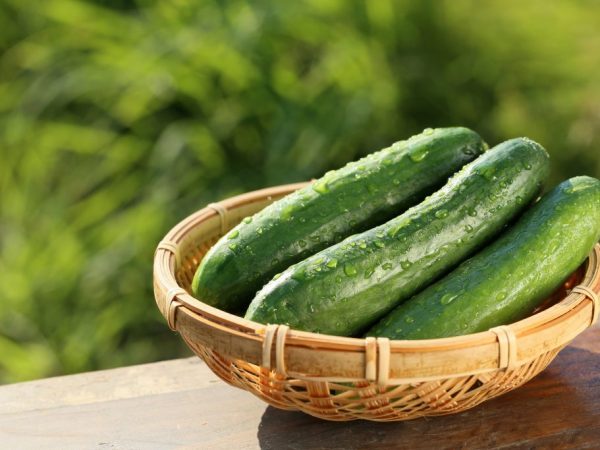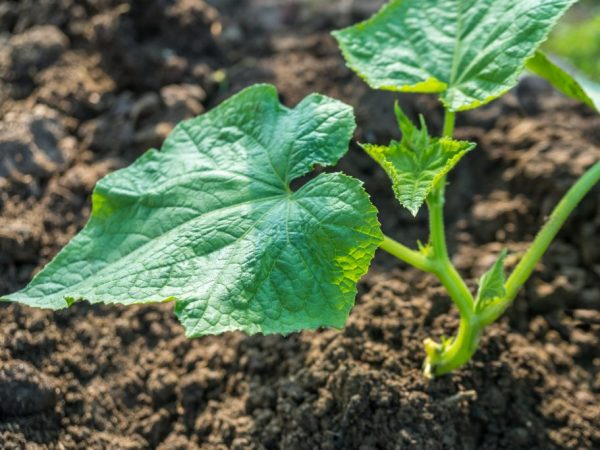Description of the Atlet cucumber variety
Each year, gardeners decide what kind of cucumber they will grow this year. Today there are many different varieties of cucumbers, each has its own positive and negative sides. The most important benefits that cucumber varieties should have are disease resistance and high yield rates. One of the well-known varieties is suitable for such a description - the Athlete cucumber variety.

Description of the Atlet cucumber variety
Characteristics of the variety
Cucumber Athlete f1 is a new hybrid plant with medium ripening times. If you plant ahead of time, then sometimes you can get yields much earlier than the appointed time. For the first time they heard about this variety in 1999, it was then in Moscow that breeders bred this type of cucumber.
It belongs to rather fruitful plants: more than 10 kg can be obtained from one bush. Even under the worst ripening conditions, the yield will not be less than 6 kg per plant, the main thing is to constantly water the plant and not forget about fertilization.
Description of the bush
When it comes to this variety, it is worthwhile to understand that the key to the success of this species is to correctly form the bush. The Athlete is a species that is pollinated by bees.
From the moment of landing to the moment of the first collection, it will take from 45 to 55 days. All bushes are indeterminate and vigorous, on average, the length reaches more than 3 and 3.5 m. Plants with an average percentage of branching and a high percentage of leafing, in addition, such a plant has mixed flowering types, but most of the flowering is still female.
All leaves are green and rather smooth, large in size and with irregular serrated edges. On average, from 9 to 16 nodes can appear on the central stem, and from 1 to 2 ties are formed in each of them. If the temperature is maintained correctly, the fruits will form several strings in a stable manner.
Description of fruits
All cucumbers are cylindrical in shape with large tubercles and a small neck of medium length. This type of cucumber in its external characteristics is very similar to a hybrid of the species - Relay, only the fruits are much shorter.
The length of the greenery can be from 17 to 19 cm, sometimes there are fruits that can grow more than 25 cm. The fruits are more than 4.5 cm in diameter, and the mass of cucumbers is, on average, 190 grams.
The skin of the cucumbers is green with small white stripes that are not always visible. Ptosis in this species is rarely observed, all the thorns are white, and the flesh is dense in structure and crunchy. The yield of such a product is 26 kg per sq. m., but the maximum yield is 37 kg per sq. m. The output is 89%. The variety belongs to the salad type, so it can only be used fresh.
Advantages and disadvantages
The Athlete has many positive qualities and one of the main ones is an excellent yield, even under bad conditions, the main thing is to constantly water the plants and not forget to feed them throughout the season. Pros of the variety:
- a large percentage of productivity;
- medium ripeness;
- good immunity;
- marketable condition;
- excellent taste.
The downside of this type of cucumber is the fact that they are only suitable for fresh consumption. They are not suitable for salting, as they will lose their shape, become soft, watery and tasteless.
Planting cucumbers

The variety can be grown in two ways
This kind of cucumber can be grown in two ways: seedling and without seedling.
Seedling method
Usually, sowing seeds for seedlings occurs a month before they are planted on the site.
Before planting the seeds, you must soak them well so that they can germinate, this way you will significantly speed up the germination process. In the open field, it is best to plant seeds only after the soil warms up, usually this period falls on the end of May and the beginning of June.
Seedless method
If you use the seedling method without, then you should know a few nuances.
- Crops of a swollen or sprouted type are planted in the ground, and its optimum temperature should be at least 12 ° C, but if the temperature is lower, then the seeds will simply disappear.
- The planting depth should not be more than 2 cm, the density of the bushes is 5-8 plants per sq. m, since such a variety mostly consists of female flowering, then for more pollination it is still best to plant several different species in the same row.
- The soil for planting should be loose enough, keep moisture well and with a high percentage of fertility. Since this type of cucumber has a small root system, it is therefore convenient to grow it.
- For the fertilization process, it is best to use a hole or trench, it should not be more than 40 cm. It is best to place organic additives in it so that the root system receives the maximum amount of vitamins and minerals.
Bush formation
When the ties and shoots begin to form, they are all removed and only 4-8 central ones are left, which appeared on the main stem. When the next 2 sinuses appear, only the lateral shoots are also removed from them. But in the next 5 sinuses, the lateral shoots are pinched by 1 leaf and 1 fruit.
Then, all horizontal trellises with side shoots are pinched by 3 leaves and 3 fruits. After that, the central stems are wrapped 2 times around the trellis and thus lower all future sprouts down, pinching them after 1-2 circles.
All other ties that appear on the horizontal trellis are removed so that they do not interfere with the growth of other lateral shoots and leaves that will protect the bush from the sun. Growing a variety is not a problem, the main thing is to correctly form the crown.
Diseases and prevention
Such a hybrid has excellent immunity to powdery mildew, in addition, the bush can safely tolerate a lack of sunlight and sudden changes in temperature, due to its strong growth and a large percentage of leaf density.
The bush also has good resistance to various diseases, but experts advise treating the seeds with any complex preparation before planting: Araks, Fofatox, Tabbu, etc. The main thing is that it protects the root system from soil contamination. If the bushes are already seedlings, then a mixture of milk and honey can be used. Spray plant leaves with this mixture every day.
After you pick the fruits, they will not lose their presentation for a long time, the main thing is to harvest them on time. If you grow from winter to spring, then the sowing of seeds takes place in early December, and planting in the ground is postponed to early January. Growing this F1 variety will not be difficult, the main thing is that there is constant care and watering.

